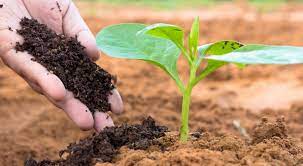- Introduction:
In the present scenario to fulfill the requirements of highly growing human population of the world leads to high industrialization which causes several degenerative effects on environment. Due to various anthropogenic activities including high industrialization and waste generation, many harmful effects are being developed in the form of pollution in our environment. Any type of pollution i.e. soil, water etc. lead to contamination of air, water as well as soil system with various severe impacts on our planet (Arora et al. 2018). It is major concern for present time to combat the effect of pollution on environment through the application of very cost effective, feasible and environment friendly technology. In this context phytoremediation is an innovative technology to reduce the pollutants in the soil or water using by using plants and their associated microbes (Furini et al. 2015) (Fig. 1). Microbes associated with the plants promote plant growth, increase heavy metal tolerance and plant fitness (Verma et al. 2019). Microbes associated with the plants impart very big role in remediation of the contaminants in synergistic manner and augment the process of phytoremediation in very efficient and sustainable way.
Fig. 1: Treatment of polluted water through application of plants (Phytoremediation)
The word ‘phytoremediation’ is a combination of both the Greek word ‘Phyto’ and the Latin word ‘Remedium’ meaning ‘plant restoring balance’. It is performed by pollution-tolerant plants growing in the water or soil system through the process various processes such as degradation, stabilization, volatilization, extraction, stimulation etc. (Yan et al. 2020) (Fig. 2). Phytoremediation technique can be applied over the sites contaminated with diverse sources such as toxic heavy metals (arsenic, chromium, cadmium, aluminium, lead etc.), plastics (polychlorinated biphenyls), pesticides, oils, solvents and other hazardous chemicals (Mohanty 2015). Various types of plant species either cultivable or wild are used for phytoremediation of toxicants such as Brassica, Raphanus, Lotus, Nymphea, Typha, Phragmites etc. (Kaushik 2011) (Fig. 3). Beside decontamination of the polluted site phytoremediation also enhances its values by converting into wetlands, parks or nurseries. Phytoremediation is highly accepted techniques to remediate the polluted sites without any negative impacts.
| Fig. 2: Remediation of pollutants through various processes involves in phytoremediation (Modified from Pilon Smits 2005) |
- Significance of the Phytoremediation:
In comparison to the conventional methods that used physical methods (such as heating or adsorption) are now been replaced by phytoremediation technique due to various benefits which are given below:
- Economically Feasible: Autotrophic system powered by solar energy with less installation and maintenance cost.
- Most effective: It can also improve soil fertility with high microbial diversity by releasing various compounds. It prevents erosion and metal leaching through stabilization. It increases the ground water recharge & oxygen level in water system along with the reduction of pollutants.
- Environment friendly: Reduce exposure of pollutants to the environment and ecosystem.
- High Applicability: It can be applied over a large scale fields of soil or water system and can easily disposed.
Fig. 3: Commonly used plants used for phytoremediation of contaminated sites
- References:
- Arora NK, Fatima T, Mishra I, Verma M, Mishra J, Mishra V (2018) Environmental sustainability: challenges and viable solutions. Environ Sustain ENVS-D-18-00118
- Furini A, Manara A, DalCorso G (2015) Editorial: Environmental phytoremediation: plants and microorganisms at work. Front. Plant Sci. 6:520
- Mohanty M (2015) Phytoremediation – An Innovative Approach for Attenuation of Chromium Toxicity and Rice Cultivation in Mining Areas. J Rice Res 3:e116
- Pilon-Smits E (2005) Phytoremediation. Annu. Rev. Plant Biol 56:15–39
- Verma M, Mishra J, Arora NK (2018) Plant growth promoting rhizobacteria: diversity and applications. In: Sobti RC, Arora NK, Kothari R (eds) Environmental Biotechnology: for sustainable future Springer, Singapore pp 129-173
- Yan A, Wang Y, Tan SN, Mohd Yusof ML, Ghosh S and Chen Z (2020) Phytoremediation: A Promising Approach for Revegetation of Heavy Metal-Polluted Land. Front. Plant Sci. 11:359
- Kaushik S (2011). http://www.biotecharticles.com/Environmental-Biotechnology-Article/Phytoremediation-Use-of-green-plants-to-remove-pollutants-704.html


